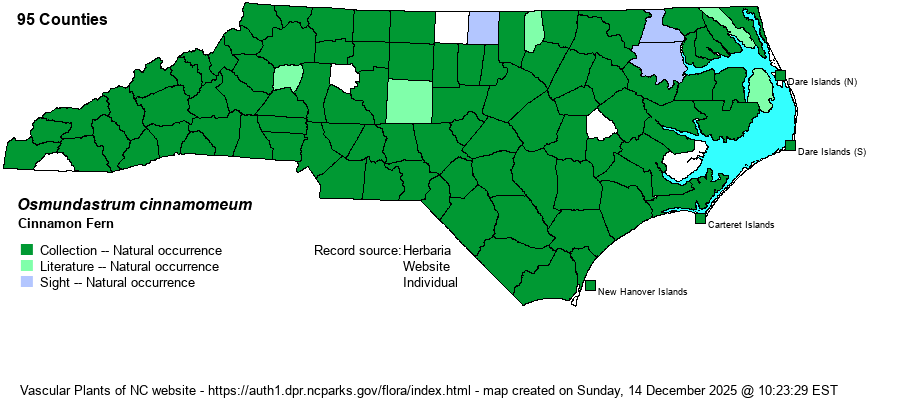| taxonName | relationship | relatedTaxonName | relatedTaxonRefText | relComments |
|---|
| Osmundastrum cinnamomeum | > | Osmunda cinnamomea var. cinnamomea | Fernald (1950) | |
| Osmundastrum cinnamomeum | > | Osmunda cinnamomea var. cinnamomea | Kartesz (1999) | |
| Osmundastrum cinnamomeum | > | Osmunda cinnamomea var. glandulosa | Fernald (1950) | |
| Osmundastrum cinnamomeum | > | Osmunda cinnamomea var. glandulosa | Kartesz (1999) | |
| Osmundastrum cinnamomeum | > | Osmundastrum cinnamomeum var. cinnamomeum | Yatabe, Nishida, & Murakami (1999). | |
| Osmundastrum cinnamomeum | > | Osmundastrum cinnamomeum var. cinnamomeum | Yatabe, Nishida, & Murakami (1999). | |
| Osmundastrum cinnamomeum | > | Osmundastrum cinnamomeum var. glandulosum | Yatabe, Nishida, & Murakami (1999). | |
|
|
|
|
|
| Osmundastrum cinnamomeum | = | Osmunda cinnamomea | Flora of North America (1993b, 1997, 2000, 2002a, 2002b, 2003a, 2004b, 2005, 2006a, 2006b, 2006c, 2007a, 2009, 2010) | |
| Osmundastrum cinnamomeum | = | Osmunda cinnamomea | Gleason (1952) | |
| Osmundastrum cinnamomeum | = | Osmunda cinnamomea | | |
| Osmundastrum cinnamomeum | = | Osmunda cinnamomea | | |
| Osmundastrum cinnamomeum | = | Osmunda cinnamomea | Radford, Ahles, and Bell (1968) | |
| Osmundastrum cinnamomeum | = | Osmunda cinnamomea | Small (1933, 1938) | |
| Osmundastrum cinnamomeum | = | Osmunda cinnamomea | Wofford (1989) | |
| Osmundastrum cinnamomeum | = | Osmunda cinnamomea | Wunderlin & Hansen Flora of Florida (3) | |
| Osmundastrum cinnamomeum | = | Osmunda cinnamomea | Flora of West Virginia | |
| Osmundastrum cinnamomeum | > | Osmunda cinnamomea var. cinnamomea | Gleason and Cronquist (1991) | |
| Source: Weakley's Flora |

